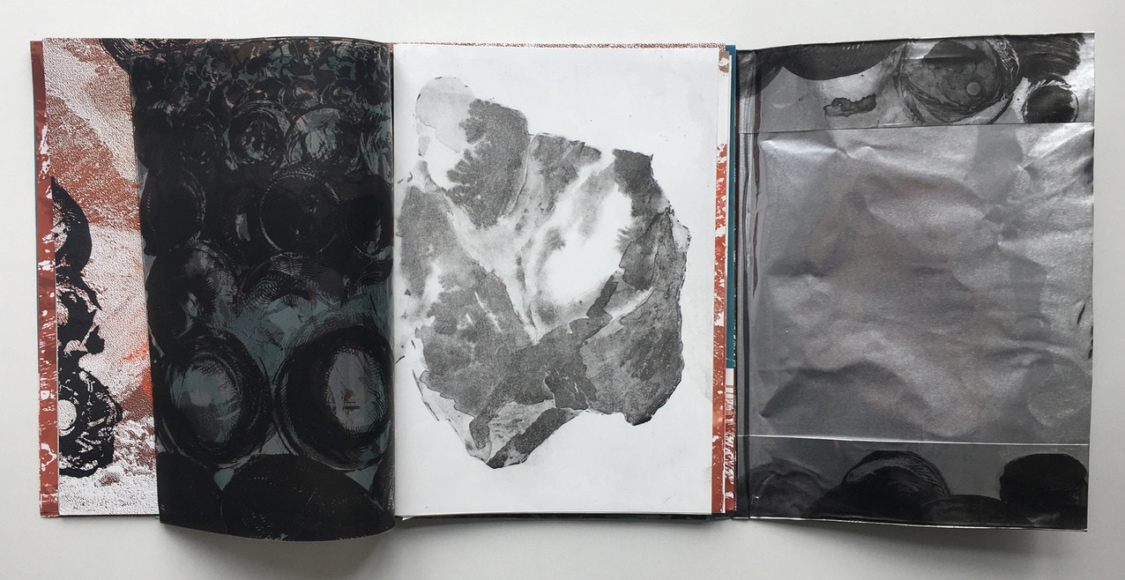
Onderzoeksprojecten
Binnen onze instelling werken verschillende docenten, kunstenaars, ontwerpers en onderzoekers aan éénjarige of tweejarige onderzoeksprojecten. In deze projecten bouwen zij hun (artistieke) kennis verder uit en verkennen zij nieuwe methodologieën, concepten en toepassingen binnen hun vakgebied.
Via een onderzoeksproject kan een onderzoeker zijn artistieke werkprocessen uitdiepen en verbreden. Ook reflectie en kennisdeling zijn belangrijk. De artistieke kennis die gegenereerd wordt, kan via workshops, publicaties, seminaries en masterclasses gedeeld worden met studenten en peers in de kunst- en designwereld. Je kan ons altijd contacteren voor maatschappelijke dienstverlening en expertise.
Huidige onderzoeksprojecten
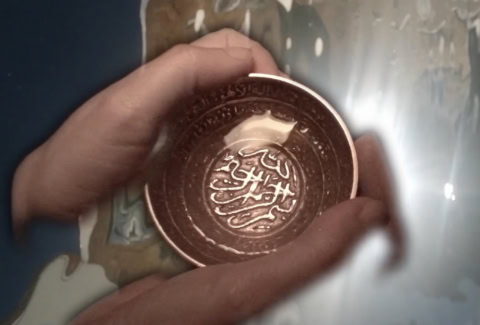
The Talisman of the Fluid Word
(2024-2025)
Researcher: Joud Toamah
I want to explore script as a further unfoldment of my previous research ‘Courtyard of Memory’ on the Fear Soothing Bowls. I encountered the role script has in the soothing and protective ritual of the Fear Soothing Bowls. Engraved on the surface of the copper by the skilled and careful hands of artisans, these Arabic scripts in different styles of Kufic geometric lines, organic Thuluth or in the handwriting of the artisan read Quranic verses, prayers and the Holy names of Allah. I’m interested in exploring the spiritual, talismanic, protective and ritualistic qualities of script in its role in the fear soothing bowls, accompanied with ornaments engraved, printed, drawn, sculpted or spoken. What are the rituals and processes for drinking and embodying text of Divine connection? What form do they take and how do they look and taste for others? My goal is developing a lettering practice, which as a result will be an added element in different applications and visualisations of sharing the research as part of websites, publications and installations that relate to this research.
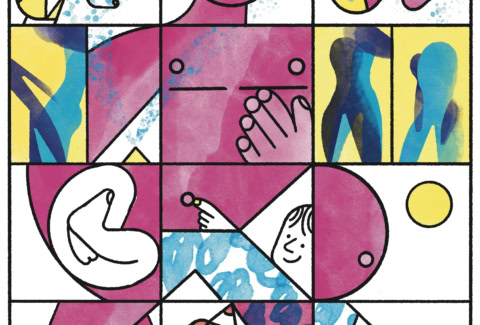
Exploring gender, diaries and binaries through visual essays
(2024-2025)
Researcher: Sam Vanbelle
In 2019, I started a series of mini sketchbooks: a safe place to draw around fertility, trans pregnancy, chestfeeding, medical transition, parenthood. During this research project I want to find ways to translate this archive of drawings into a collection of short visual essays. I’ll take the constraints of the initial sketchbooks as a formative guide. I’ll work with the spontaneity and looseness of the drawings and with the sequentiality of the booklets. I want to figure out how to use the day-to-day of the sketches as an approachable access to the trans theme. I’ll experiment with short pieces of narrative as this will give me the freedom to try different narrative styles and explore narrativity in general. Conversations with other trans and queer authors and individuals will help support the narrative and make the story broader than only my own. I aim for a socially relevant, loose collection of readable visual essays. A small piece of quiet, visual activism in a world where the space for gender varition is often narrow.
Pockets of Control / Protection Spells
(2024-2025)
Researcher: Sander Van de Vijver
The research project aims to explore ‘world building’ – an established discipline in applied narrative contexts like animation, concept art and video game design – as a conceptual grounds for counter-narrative, specifically in the context of those dealing with possible futures and their ramifications.
Through the imagining of small-scale spaces – their geometrics, myriad objects and the configurations they find themselves in – as prime subject matter, the project aims to provide a sideways view on themes of safety and control, the loss of it, ritual, protection.
‘Sideways’, as in wanting to invite ambiguity, non-linearity, speculation. A ‘view’ as in a look into, a being surrounded by, an interacting with virtual spaces, objects. The chosen modality is that of the videogame, one of the emergent contexts of applied illustration in a digital context. Or more specifically, experimenting with several of its components – immersion, interaction, a moving viewport, interactive objects – and a lot of its technical and visual language – meshes, textures, shaders, animations.
I aim to produce several small-scale digital prototypes and iterate on them. Technically I would like to combine 2d digital illustration with 3d design methodologies, and the intersection of drawing and programming. I specifically want to take some time to explore the uses of parametric design and procedural generation as parts of this toolset.
Furthermore I want to explicitly position this project within the applied field of illustrative design and its tangential field of game design, more so than in an autonomous or hybrid context, as I feel there is the most ‘work to be done’ from where I am standing: the material culture of survivalism throughout the ages has been moodboard fodder for a long time. The ‘scavenger’ as gritty protagonist fetishised, conflict and its often violent resolution center staged. I hope to steer clear of this and provide a small counterweight, by acting more as a ‘stock taker’ than a ‘dungeon master’ in my approach towards story, and by centering flux and a constant re-arrangement, instead of solution and resolution, and by introducing – hopefully, because not all too deliberately – nuance, ambiguity, fragility.
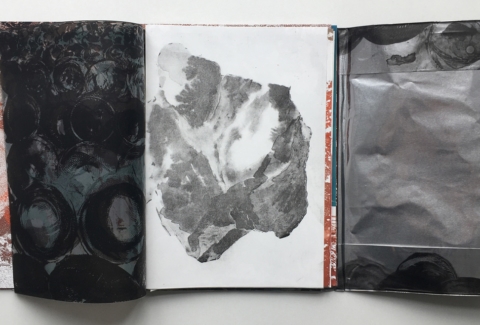
City in Reverse: Reflecting Aluminum
(2021-…)
Researcher: dr. Karen Vermeren
The research project wants to explore whether the representation of a contemporary (geological/urban) landscape can be enhanced using the material aluminum. In addition to concrete and plastic, it is a symbolic material for the current Anthropocene era, a so-called technofossil. Drawing and/or painting takes place with and/or on various aluminum carriers, challenging innovative spatial approaches and interactions. The characteristic properties of the improper material in relation to an (urban) landscape are investigated. By using formal means – such as the grid, folds, a window – the crumbling landscape is given a new framework. Reflective surfaces are added to this research project: the in-situ experience is (re)quested, and new meanings are generated for the concept of time.
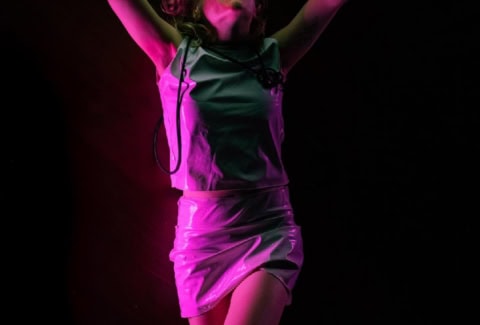
Strange Loops: performative explorations with trustworthy AI
(2025-2026)
Researchers: Frederik De Bleser, Lieven Menschaert, Myrthe Bokelmann & Celia Tort Pujol
This research explores the intersection of AI and performance art by developing human-scale, trustworthy AI systems that enable artists to engage in creative interactions with machines. These AI systems are designed to be adapted during working sessions, allowing for rapid iterations and real-time adjustments.
Using these AI systems we aim to develop an open method of performative explorations. Through these explorations we create sensory and conceptual translations that present a dialogue between body and machine. The project will result in a series of performances and open-source tools that showcase the potential of AI in artistic contexts, fostering a collaborative and improvisational relationship between human performers and intelligent machines.

(re:Sol)
(2024-2026)
Researchers: Reem Shilleh & Joachim Ben Yakoub
Situated in the Kitchen, a space dedicated to collective practices and study, (re:Sol) proposes to work on sensible forms of memorial restitution through the re-distribution of various radio programs and self-published magazines produced by the Maghrebi community during the 1970s and ’80s in Brussels. Collaborating and working nearby protagonists and witnesses of that period, it engages in possible forms of sonic and visual re-imagination, and re-distribution of forms of solidarity engrained in the collected traces. Weaving printing and sonic practices, it aspires to contribute to the ongoing conversations in artistic research on collective forms of imagination, memory and solidarity work.
Voorbije onderzoeksprojecten
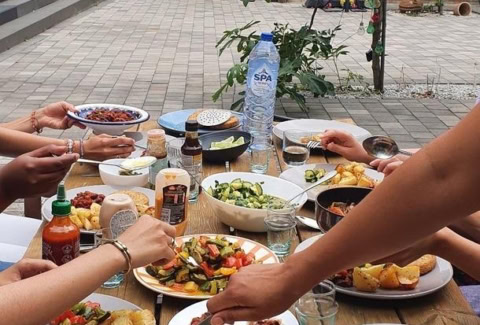
Towards Braver Spaces
(2023-2024)
Researcher: Tunde Adéfioye & Imane Benyecif
This research project investigates the creation and sustainability of “Braver Spaces” in Antwerp. The study explores collective art-based practices that support artistic development and incorporate care as a practice. The project will examine past implementations of Braver Spaces, the methods used since its inception in 2021, and future possibilities. Key research questions include the nature and impact of braver spaces, their limitations, and the lessons these limitations can teach for future iterations. The methodology involves using art-based tools, experimental thinking, co-creative and horizontal working methods. Objectives include reflecting on and experimenting with the Braver Spaces concept, interviewing participants, formulating consistent forms of collectivity, researching the feasibility of creating sustainable physical spaces for collective artistic experimentation, and assessing potential partnerships. Expected outcomes include the development of various reflection methods, a manuscript or collage documenting the research, the beginnings of a collective toolkit, and the creation of an informal network. The project emphasizes the importance of alternative learning perspectives, cooperation, dialogue, and centering marginalized individuals within artistic and societal contexts.
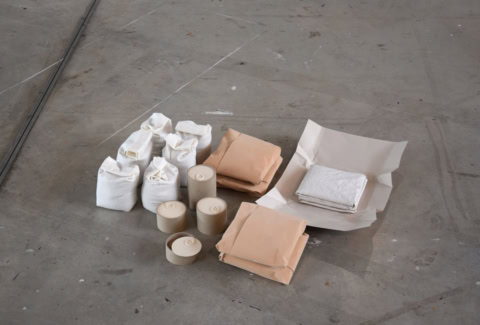
On sand: unpacking preciousness
(2023-2024)
Researcher: Saskia Van der Gucht
This one-year artistic research project questions, through the Capitalocene as an overarching theoretical framework, what the role of packaging could be, in the age of understanding our interdependence with living and non-living beings. In a 2022 UN report on sand and sustainability, sand is reported to become scarce as it is the second most used resource, after water, on earth. It is present in every structure, road, window and screen we use daily. As abundant as it seems, it is predicted to become scarce due to overconsumption by industrial use. In my artistic practice, the metonymy of packaging and preciousness, jewellery boxes being a well-known example, becomes a means to question how the finitude and thus the value of this raw material and the consequences of its extraction are underestimated. Through re-making and repairing industrial sand packaging by hand and crafting new ways of carrying, I’m searching for slow and gentle forms to visualize a sense of care for materials.

Courtyard of Memory
(2023-2024)
Researcher : Joud Toamah
How can generational practices of personal and communal protection and medicine be remembered and practiced in situations of exile and diaspora? How can they be read and practiced?
For this research proposal, I center an ancestral object and practice of protection and soothing, the ‘Fear Soothing Bowl’. My research will approach this subject in four multiple dimensions: first as an object, from the material, to the formal, to the design elements, second as a protective ritual related to Islamic, local and generational philosophies and knowledges, third as a relational communal element, fourth as a practice related to time-space. I’m interested to look at the elements that the craftsmen engrave on the bowls, from text, images and numbers, as a source to understand ‘design’ as part of a healing art, and the role traditional craftsmanship and craftswomanship played in it. I am also interested to study the materials used for these bowls, usually copper, and experiment with different mediums to create and present the research in a shared space.
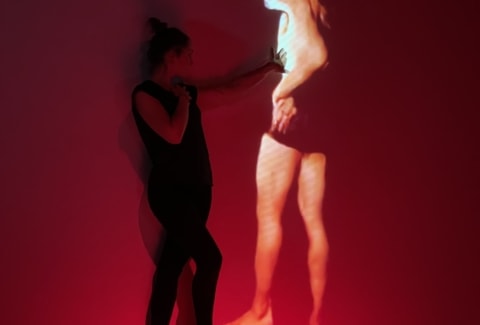
Performative AI – an Unstable Alliance Between Bits and Body
(2021-2024)
Researchers : Frederik De Bleser, Lieven Menschaert, Ine Vanoeveren, Cèlia Tort Pujol, Myrthe Bokelmann.
This research explores how AI understands the materiality of body, space and time. The research project aims to bring AI into the artist’s practice by developing open-source tools and methodologies that make the domain more accessible and transparent. Through carefully self-assembled datasets and an intuitive visual understanding of algorithms, we can avoid the bias inherent in large-scale models and take ownership of our own “small AI.”
https://algorithmicgaze.com/projects/performative-ai/
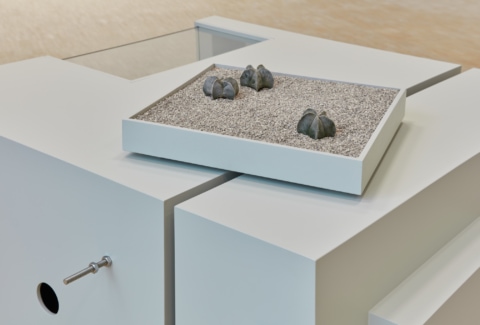
In the zone of the Science Fictional
(2021- 2024)
Researcher : Welsey Meuris
An accumulation of seemingly scientific facts (historical and technological) often conceives an overly one-sided view on future thinking. This research wants to examine how specific narrative techniques can be used to cast an accessible yet critical light on sometimes too plausible scenarios. Speculative design, fictocriticism, design fiction, potential history, science fiction… are some of the techniques that can be used experimentally to reconsider deeply rooted relations to scientific progress. Science fiction can offer the possibility of presenting things differently than they appear, perhaps closer to what they actually are. Furthermore, science fiction can be used to explore the limits of what it means to be human when confronted with the non-human. Which artistic processes and constellations allow us to reconsider common chronologies? How can new and alternative narratives reposition the current configuration of science and technology?
www.wesleymeuris.be
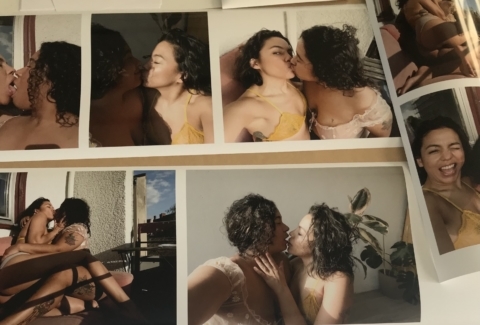
Women versus the void – apocalyptic feelings and healings in custom everything
(2021- 2023)
Researcher : Helen Dowling (Mauli)
Informed by science fiction literature I investigate whether I can use the analogy of the apocalyptic within the mundane to carve out space for and frame expressions of female frustration and sexuality. In practice this space will be within the sphere of custom pornography. I will be working with a professional pornographer from this field. In doing so, my aim is to produce content that derives representations of female sexuality from the particularities of custom porn, in visual, technical, and ethical terms.
www.helendowling.com
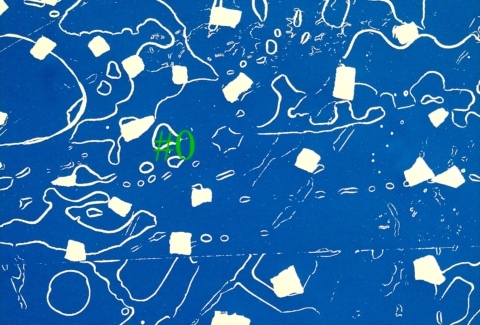
Sharing Tools and Strategies for Transformative Art Collaboration
(2021- 2022)
Researcher : Marnie Slater
This research emerges from challenges I experience though my collaborative practice within the visual arts. Namely, that although there is an increasing interest in collaboration as a transformative practice, artists are under-tooled to work together. I will ask: How are artists who practice together embedding their aims within their collective working methodologies and how can I gather and share these tools and strategies with others?
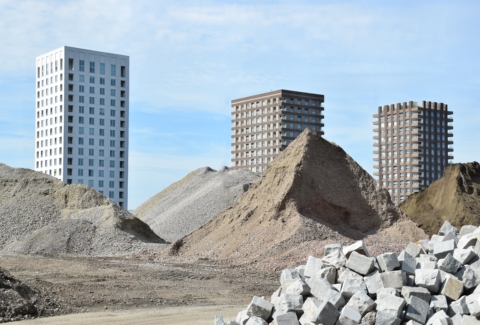
Jewellery Matter Time: Hard Data, Soft Stories
(2021-2022)
Researchers : Saskia Van der Gucht & Irma Földényi
‘Jewellery Matter Time – Hard Data, Soft Stories’ unveils contemporary stories about mined materials and how they contribute to jewellery as a practice. The global movement of materials has a variety of ecological effects, many of which are concealed in the shadows behind shiny objects. If jewellery can tell stories, which stories could they tell about their origin in the age of the Anthropocene?
This geological era in which mankind’s influence on the earth and its atmosphere is visible, overconsumption and overproduction asks from us researchers to redefine preciousness and scarcity. In this research hard data is defined as facts on material movement such as extraction, transport, consumption and recycling. Soft stories are outcomes – meaningful connections between these facts – that will be crafted into objects and installations.
studio-if.nl
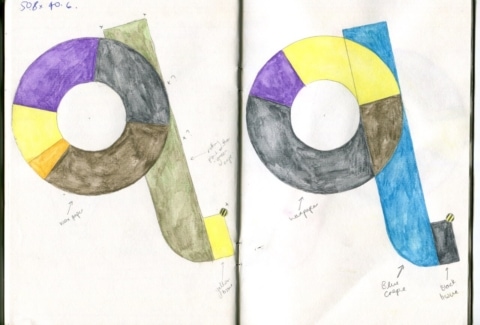
Learning from Queer, Feminist and Decolonial Activism
(2020-2021)
Researcher: Marnie Slater
As a visual artist, I have both a solo art practice, and a series of long-term and short-term collaborations that are committed to self-organizing. My participation in collaborative art practice is motivated by a desire to form a queer, feminist and decolonial position, and an urgent sense that this can only be done from within the relational politics of a collective. In my experience, however, visual arts institutional structures often struggle to provide channels that can accommodate or inform the processes we need for queer, feminist and decolonial collaborative work. Within this research I will analyze the collaborations I am directly involved in and look to specific forms of feminist, queer and decolonial activist organizing to ask: Can activism, a field often considered as adjacent to the discourses of contemporary art making, provide practical process tools for artistic collaborations? This research will examine the ways that we, as queer, feminist and decolonial art collectives, can define our own processes, ethics and ways of relating with each other to denaturalize and confidently resist conventional working methodologies.
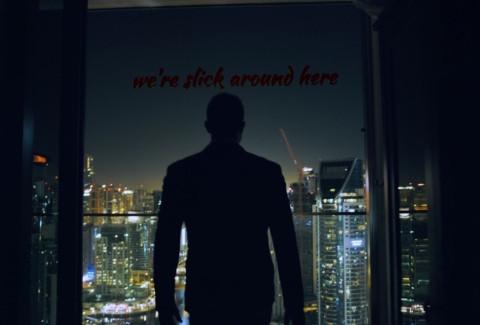
Terms of Intimacy, an abstract
(2020-2021)
Researcher : Helen Dowling (Mauli)
This research taps into one of my overarching interests in digital culture, namely, the impact distribution systems have on the production method and content of accessible digital imagery. Terms of Intimacy specifically addresses and critically engages with the custom pornography industry, analyzing and looking at how to incorporate its production structures into the realm of video art and repurpose its acting into new divergent narratives. What aspects of contemporary pornography prejudice the body and where do they originate from? Can they be subverted in video art to re-articulate the feminine in the light of the pornographic? As a video artist, my aim is to create an extricated rendition of the sexual in moving image production, one that addresses an affinity to the individual.
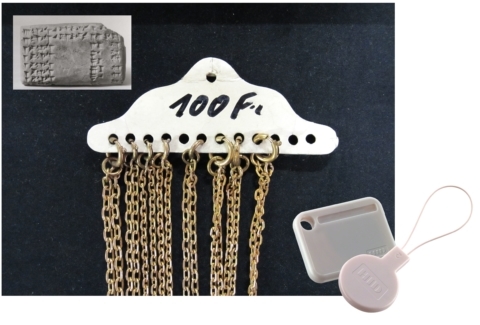
Jewellery, Matter, Time – True Cost of a Jewel
(2020-2021)
Researchers : Saskia Van der Gucht & Irma Földényi
In our current project we are building on the research of ‘Jewellery, Matter, Time – Materials in the Anthropocene’ by Irma Földényi and Liesbet Bussche, which investigated how precious materials are becoming extinct as a result of human activities on earth. There we have developed a visual essay on how artificial diamonds are becoming a new form of natural stone and concluded that growth time is speeded up, materials have no rights, jewellers are not part enough of public debates on material issues and the industry is not fully transparent on the true costs – among others.
Therefore in ‘Jewellery, Matter, Time – True Cost of a Jewel’ we will focus on the social contexts of man-made precious materials – contexts such as production, makers, traders, curators, collectors, wearers – to trace true cost, and the renewed meaning of material usage. We will follow one material from production contexts to the wearers context.
Furthermore, even though these are challenging times we are looking forward to find new ways of connecting with people, deepening our understanding and extending the contexts of jewellery by engaging with professionals from different fields within arts and design who are dealing with various questions relevant to the Anthropocene.
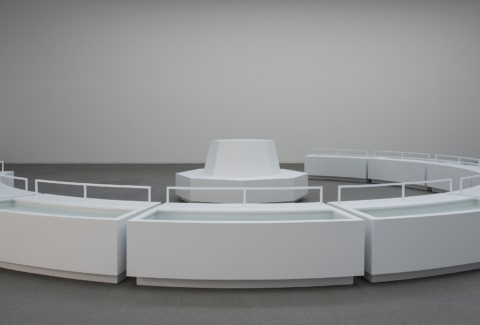
Unfolding
(2019-2021)
Researcher : dr. Wesley Meuris
This research wants to unfold the phenomenon of ‘exhibiting’, in and beyond the sphere of the arts. Within the area of natural history, anthropology, technology and even speculative sciences remarkable forms of presentation have been developed to convey insights on knowledge. A historical context will be set to reflect on theoretical and artistic positions in the field of display. Contemporary art projects will be viewed to examine common exhibition formats, as well more complex exhibition mechanisms. How does a work of art communicate with its own exhibition context? And in extend, how can this dialogue be incorporated in the work itself? Which parameters of exhibiting allow being absorbed through the work itself? How can a curatorial narrative be implemented in a work of art? What would be the effect of appropriating historical exhibition mechanisms within the work of art?

Strange currencies
(2019-2021)
Researcher : dr. Kim Gorus
The contemporary literary field is characterized by a revival of 19th century formats such as the Bildungsroman, the travel story or the (auto)biographical novel. This stands in strong contrast to the literary form-experiments from the 50ies and 60ies, that explicitly tried to achieve a rapprochement to the visual arts and wanted to sever itself from the novel as a bourgeois genre. There are, of course, exceptions to this rule, but in general we can assess a return to traditional narrative formats in the field of literature.
At the same time we can discern a growing attention for literary fiction within the domain of the visual arts as of the 80ies. The so-called ‘iconotextual’ book experiments from the 60ies have, thus, been continued in the visual arts, contrary to the field of literature, albeit in a very different form. Visual artists increasingly integrate publications as well as (literary) fiction in their work, whether as part of an exhibition, or not. In a certain sense it seems as if literary innovation has cut itself loose from the field of literature and has infiltrated in the domain of the visual arts.
This research project wants to study a limited corpus of artist’s publications and analyse how these publications challenge both literary as well as artistic categories and formats. The focus will be on instances of historiographic fiction and visual writing.

The Archives of the Tout-monde. In search of refuges for subversive aesthetic experiences
(2019-2021)
Researchers : dr. Joachim Ben Yakoub, Naïma Moldenhauer & Reem Shilleh
The action research ‘The Archives of the Tout-monde’ wants to engage with post-disciplinary visual praxis of artists and collectives in urban informal networks, outside the regular arts field.
Through the establishment of localized refuges that can facilitate subversive aesthetic experiences, it will analyze how regular institutions relate to this visual praxis.
Special attention for the relational, economic and ecological core of these land-shifting practices will contribute to the current research on the (under) commons.
Balancing between the sometimes counterproductive desire for visibility and the power of the invisible, aesthetics from the archives of decolonization and transnational solidarity are reactivated.
Boundaries are troubling, artists become curators and curators artists, as a result, the created spaces become works of art with their own sensibilities. From this shift, there is space for researching collective decolonial curatorial practices that, from the bottom up, blow life back into the apparently timeless still life of the visual arts.
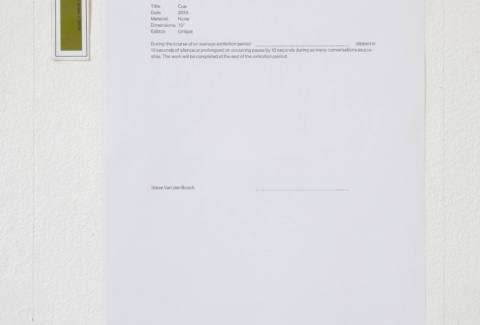
Cue: Instruction as Artwork
(2019-2021)
Researcher : dr. Steve Van den Bosch
Research in visual arts practice on the possibilities and implications of instruction as a work of art in dialogue with, but also beyond the history of conceptual and post-conceptual art, with particular attention to Eastern Europe.
The instruction will be viewed from other disciplines such as film studies, philosophy and psychology to arrive at a deeper insight and produce works that reflect the complexity of the instruction in contemporary art from the specificity of my artistic practice. In doing so, I will mainly focus on the tension between the instruction and its tangible or intangible result. The shifting roles of author, performer and audience are also of central importance, which also involves the investigation of intention, visibility, consciousness, interpretation and social context.
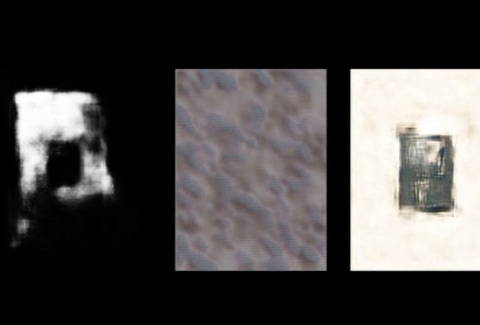
The Algorithmic Gaze: democratizing AI for artists and designers
(2019-2021)
Researchers : dr. Frederik De Bleser en Lieven Menschaert
The applications of artificial intelligence have permeated our society in recent years. Consider speech recognition, translation software, fraud detection, cancer cell detection, facial recognition and self-driving cars. Many of those applications teach the computer to look at the world.
In this research project we want to explore the creative applications of AI by gaining insight into the artificial thinking process of the computer. How can we, by “deciphering” the algorithms, get a view of “The Algorithmic Gaze” – the image that the computer has of the world, and how does this view influence our own view of reality? Is it a method that can create a new kind of innovative images or styles? Can a computer algorithm guide a creative process? And how do we democratize this research by simplifying the complex procedures so that they become accessible to a broad group of non-technical designers and artists?
https://algorithmicgaze.com/projects/the-algorithmic-gaze/

Images of hate
(2019-2021)
Researchers : dr. Tom De Smedt & Tom Van Iersel
In the course of this project, we intend to study the role of graphic design (image manipulation, design, typography, marketing) in polarization on online social media, and formulate appropriate responses to this kind of hateful propaganda in the form of counter narratives.
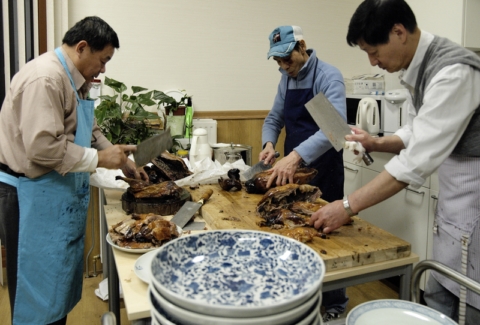
Designing Dialogues – artifacts as catalyst
(2019-2020)
Researcher : Laura Braspenning
This project focuses on facilitating a valuable dialogue in the contemporary urban reality of diversity and transnational mobility. By making intangible culture tangible through artifacts, people become aware of these ambiguous histories. This project explores how these artefacts can function to stimulate new insights, dialogue, mutual understanding and exchange between people, cultures and generations.
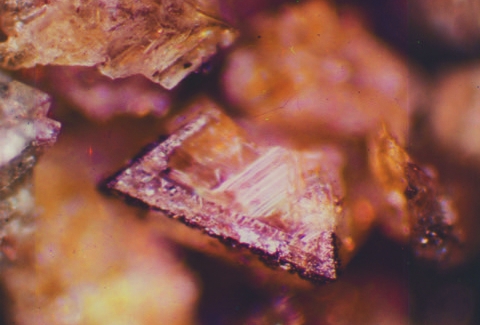
Jewellery, Matter, Time
(2019-2020)
Researchers : Liesbeth Bussche & Irma Földényi
This research project rethinks the position of the jewellery designer in the Anthropocene through artistic research into his/her material use and work context. Starting point is the area of tension between natural, traditionally valuable materials that cause irreparable damage to the earth during exploitation and artificially produced materials, which can serve as valid alternatives at first sight. The compilation of a material library, discussions with experts and field trips to industrial sites lead to critical findings on valuation and significance of matter and are made public in a scenographic presentation and article. The second part of the research project focuses on the artistic creation of a jewellery-related object in the context of the material. The unusual methodology for the jewellery designer of the inverted workshop that transforms a material-related context to a production context offers insights for the redefinition of the work context of the jewellery designer and the relevance of jewellery within the theme of the Anthropocene.
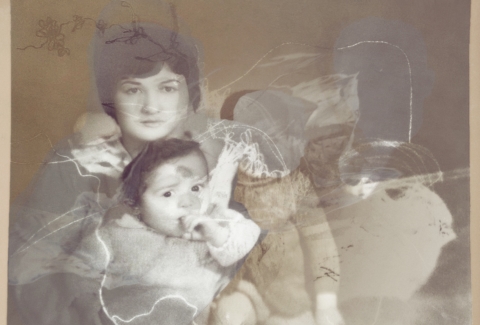
H.E.P. Hybrid editorial practices
Researcher : Hugo Puttaert
This research focuses on new collaborations, described as ‘hybrid editorial practices’ between artists and designers. Born from the ‘making public’ of visual practices, in which the monograph, the reference book and the catalogue are still the most common carriers, a hybrid editorial practice is fundamentally different. The work itself is the confluence of original and reproduction, and it involves intensive collaboration between artists and designers, in which their positions merge into one another. Whereas graphic designers were rather at the service of the imagination of an artistic practice, the concept of ‘artist’s book’ is interpreted differently in a hybrid practice. In a sense, this research contributes to a greater appreciation of the autonomous position that graphic designers acquire, no longer subordinate but equivalent.

The Performative as a Tool – Haunting Histories
(2018-2023)
Researcher : Paul Hendrikse
The Performative as a Tool – Haunting Histories is researching how the body and language are tools for artistic production. During the last two decades artists shifted their mode of production and became more research based. Documentary, research, journalism, literature, the body and language have become tools for artistic production. But how can I think the performative gesture further? What potentialities does it have and what is the full realm of its use? Can I direct my practice towards a mode that allows the works to become reservoirs of potential future action, as prompts for the audience or artist activity, and even as actors?
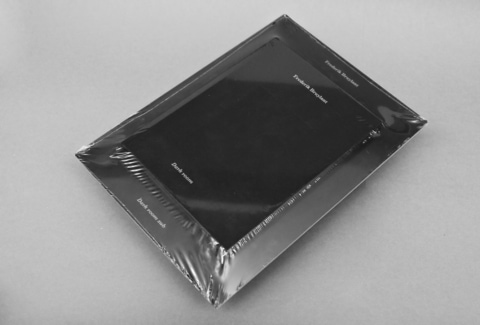
Sleeperhold Publications
Researcher : Ward Heirwegh
Sleeperhold Publications is a researching publication platform with a focus on editorial design. It departs from the practice of graphic design and presents itself both as client and designer. Its focus is interdisciplinary collaboration between creative landscapes. Sleeperhold will produce 10 outputs. After #10 this project will end. Every number is an experiment in approach / collaboration / distribution / media. There is no recurring theme, there is no recurring format, there is no recurring audience.

Workout
Researcher : Lauren Grusenmeyer
Workout is an investigation into the use of the ‘contrainte’ in visual arts and graphic design – or how the use of restrictions and time limits create freedom. Workout highlights artists and designers who define their free working terrain by imposing themselves a series of limitations.
By limiting themselves in time, material or way of working the makers become their own commissioners. This method casts itself as self-education, in which the repetitive character of the method allows to investigate a subject in depth. Thus, one finally finds ‘surprise in the routine’, as Henri Jacobs accurately worded and ‘one discovers freedom in the discipline’. This way the research endeavors to find answers to the fear of the white page or what else to do in a world of opulence. Within the framework of this research a series of artists are invited to reflect on their practice in relation to their methods and to test it with students.
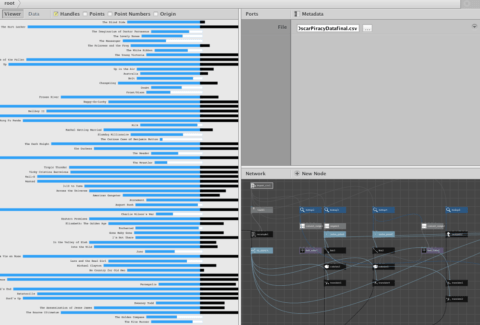
Nodebox
Researchers : dr. Frederik De Bleser, Stefan Gabriëls
EMRG is passionate about open-source software. Most of our tools are free or have licenses interesting to artistic, scientific, non-profit as well as commercial organizations.
NodeBox is a Mac OS X application that lets you create 2D visuals (static, animated or interactive) using Python programming code and export them as a PDF or a QuickTime movie. NodeBox is free and well-documented.
https://www.emrg.be/software/

Plot(less)
Researchers : dr. Steve Van den Bosch, Paul Hendrikse, dr. Kim Gorus, Joachim Ben Yakoub
Stories are everywhere. What is narrated, exists. Reality is fictionalized. Contemporary art theory and art practice centers on narrative strategies and structures. Narrative strategies seem to be pre-eminently suitable to question the borders between fiction/non-fiction, truth/perspectivism, identity/performativity. Narratives become a means to install the complexity and contradictions of things. Narration offers the possibility of migrating between positions. It is also a way to realize a ‘poetic hauntology’ echoing multiple voices of the past into the present. Narrative strategies also refer to ‘democratic reiteration’ by means of retranslating concepts, ideals and stories and democratizing and redefining fixed meanings.

A certain amount of words within a certain amount of time
Researchers : Marc Nagtzaam
Nagtzaam’s practice might be seen as belonging to the cult of the late modernist abstraction, with its emphasis on materiality, process and pure perception, unaffected by imagistic associations. However, language plays a decisive role in the deviation from this legacy, apparent both in the text works and in the titles given to the drawings which bring back to the factual, establishing the extent to which his works act as dense time-containers, despite their small, malleable, portable format. In the text works, the letters become forms and images themselves, more to be seen than to be read. Is the artist writing or depicting the image of a text? Even if we knew where these texts came from, we would have no idea where they are going. Are they excuses for miscellaneous representations, or a way to affirm form beyond semantic connotations?